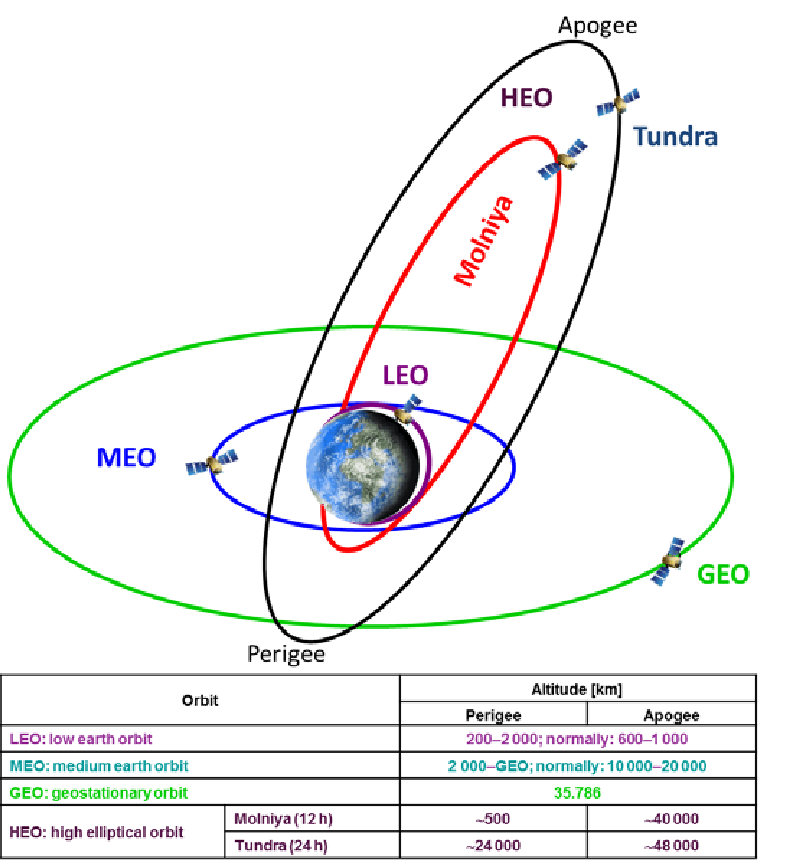GEO
Geosynchronous/geostationary earth orbit (GEO): A geosynchronous satellite has an orbital height of 35,786 km, and its orbit matches the earth’s rotation with an orbital period of 24 hours. From a ground observer’s perspective, the satellite appears fixed at a single longitude, though it may drift north and south. If the orbital eccentricity and inclination are both zero, the satellite orbits over the equator in a circular orbit. The resulting orbit is geostationary, and the satellite appears to be in a fixed position to an observer on the ground.
地球同步/地球静止轨道(GEO):地球同步卫星的轨道高度为35786公里,其轨道与地球自转相匹配,轨道周期为24小时。从地面观测者的角度来看,卫星似乎固定在一个经度上,尽管它可能会向北和向南漂移。如果轨道偏心率和倾斜度都为零,则卫星在赤道上空以圆形轨道运行。由此产生的轨道是对地静止的,对地面上的观察者来说,卫星似乎处于一个固定的位置。
MEO
Medium earth orbit (MEO): The orbital height of MEO satellites ranges from 2,000 km above the earth’s surface up to the height of a GEO satellite. The associated orbital period ranges from about 2 to 24 hours.
中地球轨道(MEO): MEO卫星的轨道高度从地球表面以上2000公里到GEO卫星的高度。相关轨道周期约为2 ~ 24小时。
LEO
Low earth orbit (LEO): The orbital height of LEO satellites is mainly from 400 km to 2,000 km above the earth surface. LEO satellites move fast and rotate around the earth every 1.5 to 2 hours. Since a LEO satellite quickly changes its position relative to an observer on the ground, the satellite is only visible to the observer for a few minutes.
近地轨道(Low earth orbit, LEO): LEO卫星的轨道高度主要在距地球表面400公里到2000公里之间。LEO卫星运行速度快,每1.5到2小时绕地球转一圈。由于LEO卫星相对于地面观测者的位置变化很快,观测者只能在几分钟内看到卫星。
